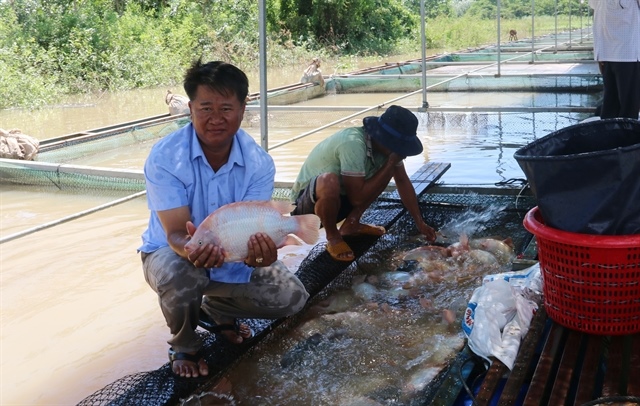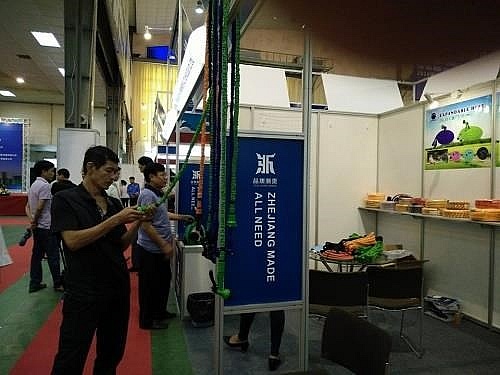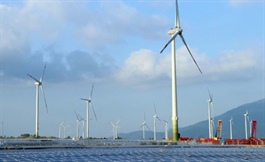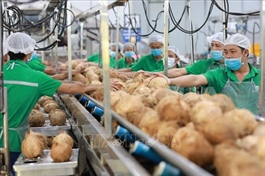Seafood exporters making tariff-ready adjustments
Seafood exporters making tariff-ready adjustments
Vietnam’s seafood industry is navigating a challenging export landscape thanks to tariff-related uncertainties in key markets.
Nguyen Hoai Nam, general secretary of the Vietnam Association of Seafood Exporters and Producers (VASEP), noted last week that while specific policy measures from the United States have yet to be officially released, the upcoming US tariff changes represent a substantial competitive headwind. At the same time, this pressure is catalysing structural reform within the industry.
The US administration is expected to make further changes to its retaliatory tariff regime on August 1.
“The shift forces the sector to enhance transparency across supply chains, invest in deep processing, and diversify export markets,” Nam explained. “In the US and EU, there is a strong pivot towards high-value processed seafood products, such as fillet, tempura, sushi-grade, and ready-to-eat frozen goods. If we can withstand this period, the Vietnamese seafood sector will emerge more resilient and globally sustainable.”
Vietnam currently ranks as the sixth-largest seafood supplier to the US, behind Canada, Chile, India, Indonesia, and Ecuador. In turn, the US remains Vietnam’s third-largest seafood export market, following Japan and China, with total export value estimated at $891 million as of the end of Q2, according to the Ministry of Industry and Trade.
Meanwhile, VASEP highlighted that exports to the EU continue to benefit from preferential tariff rates under the EU-Vietnam Free Trade Agreement, while other markets such as Japan, South Korea, ASEAN, and China remain promising albeit increasingly stringent in their quality and traceability standards.
To meet these evolving requirements, VASEP is ramping up efforts to assist enterprises with aquaculture zone registration, QR-code traceability systems, and documentation for origin certification.
Ho Quoc Luc, chairman of Sao Ta Foods JSC, stated that Vietnam’s seafood sector maintains an almost fully domestic supply chain. From farming to processing, production activities are primarily localised.
“At this stage, it is still unclear how US tariffs will apply to the sector in general, or to shrimp in particular. However, for shrimp alone, the entire value chain is domestic, except for a limited volume of imported feed ingredients and breeding stock,” Luc emphasised.
According to the Ministry of Agriculture and Environment, Vietnam’s seafood exports reached $5.16 billion in the first half of 2025, up 16.9 per cent on-year. Shrimp exports rose to $2.07 billion (up 26 per cent), while basa fish brought in $1 billion (up 10 per cent).
To the US specifically, basa fish exports stood at $158 million by mid-June, marking an 8 per cent on-year increase, while shrimp exports reached approximately $341 million. The US is currently the fourth-largest importer of Vietnamese shrimp and the third-largest for basa fish.
However, the ministry indicated that the bulk of this growth stemmed from orders placed earlier in the year, particularly under contracts signed before tariff concerns intensified.
“The looming threat of new tariffs on Vietnamese basa fish from August 1 has prompted many companies to refrain from signing new contracts, instead accelerating the fulfilment of existing deals,” said Tran Dinh Luan, head of the Directorate of Fisheries. “Some exporters are shifting towards high-quality, value-added processed products to improve margins and mitigate the impact of potential price increases once new tariffs take effect.”
VASEP believes that export performance in the latter half of 2025 for shrimp and basa fish will hinge entirely on US trade policy. In particular, the shrimp sector faces triple tariff pressure, from anti-dumping duties, countervailing duties, and retaliatory tariffs.
Prospects for the items are slightly more optimistic following the US Department of Commerce’s decision in June to maintain a zero anti-dumping duty for seven Vietnamese companies. If retaliatory tariffs are kept under control, the basa fish segment may be poised for a breakthrough, experts said.
According to VASEP projections, if countervailing tariffs exceed 10 per cent, the US may no longer be a stable market for Vietnamese seafood, particularly for products with complex supply chains. This would shift focus to neutral markets like Japan, the EU, and ASEAN, though these may not fully offset losses amid slow global demand.
In the first half of 2025, China, the US, and Japan were Vietnam’s top seafood importers, accounting for 19.6, 18.2, and 15 per cent of exports, respectively. Shipments to China jumped 53.7 per cent, and exports to Japan rose 9.1 per cent. Brazil also showed strong momentum, up 71.3 per cent on-year.
“Vietnamese seafood exports are demonstrating commendable agility in an unpredictable global environment,” explained Nam of VASEP. “However, the sustainability of growth in the second half of 2025 will depend largely on US trade policies. These will be the decisive factors shaping the industry’s future trajectory.”
Vietnam currently exports seafood to over 170 global markets and ranks third worldwide in seafood supply. In 2025, the country’s seafood industry is targeting total exports of $10.5 billion.
- 10:41 25/07/2025



























